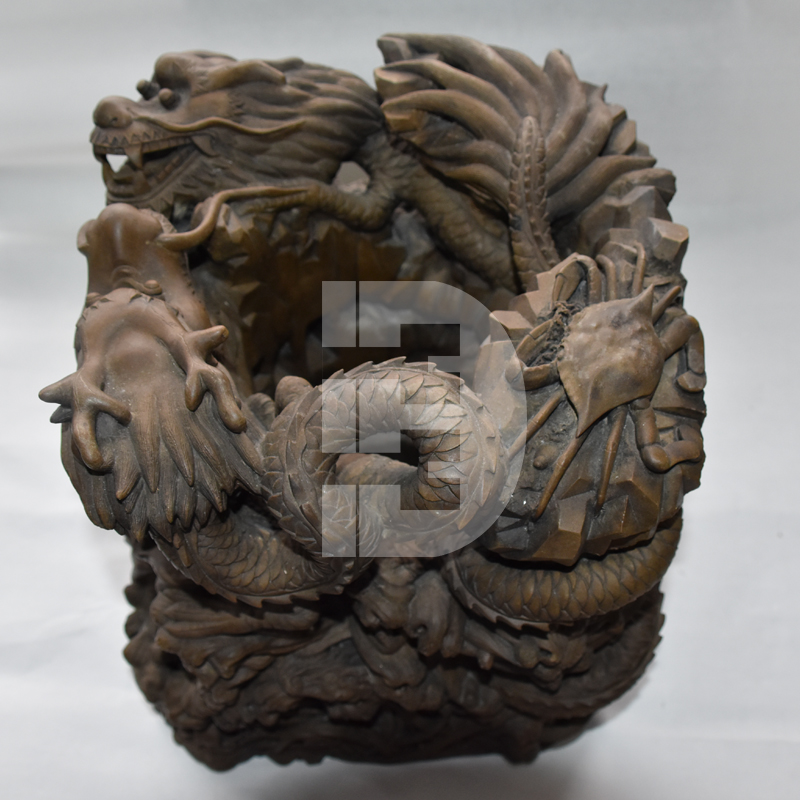stone crafts refer to the art of using various carved and engraved stones to create visible and palpable artistic images with a certain space, so as to reflect social life and express the artist's aesthetic feelings, aesthetic emotions, and aesthetic ideals. The history of stone art can be traced back to the middle Paleolithic period, one or two million years ago. Since then, stone art has been passed down to this day. In this long history, the creation of stone art has also been continuously updated and improved. In different periods, stone art has undergone great changes in types and styles.

1. Grottoes and Cliff Stone Art
It began at the end of the Han Dynasty, flourished in the Wei, Jin, Southern and Northern Dynasties, flourished in the Sui and Tang, and continued to the Song, Yuan, Ming, and Qing dynasties. Its development is closely related to Buddhist culture, and the statues of stone carvings mainly depend on Buddha pictures. There are tens of thousands of stone statues in various grottoes, with various shapes and costumes, occupying an important position in the history of culture and art. In the grottoes, there are also rich and colorful architectural images such as stone art halls, towers, ribs, pavilions, beams, bucket arches, caissons, etc., reflecting the architectural style of the past dynasties. Grotto cliff stone art is generally carved on the rock wall of sandstone or limestone.
2. Palace and garden stone art
Stone art and
stone carving decoration can be seen everywhere in the palaces, government offices, houses and gardens of the royal family and relatives of the emperor. The ancient buildings are very large and magnificent, and the carving skills are exquisite. Among them, the well-known stone art of this kind include the stone carvings of the Daming Palace in the Tang Dynasty, the stone carvings of the Confucian Mansion from the Jin Dynasty to the Qing Dynasty, the Forbidden City of the Ming and Qing Dynasties, Beihai and Yuancheng, the Potala Palace, the Shenyang Forbidden City, the Summer Palace, the Summer Resort, and Prince Gong's Mansion. Garden and Yuanmingyuan stone carvings, etc.
3. Temples and shrines
Stone carvings such as Jingzhu altar stone art are widely distributed in China, with a large number and a long history. There are many famous stone art and stone carving art works. For example, the marble stone carvings of Chongsheng Temple from the Tang Dynasty to the Five Dynasties, the white marble scripture pillars of the Shishi Temple in the Tang Dynasty and the white marble statues of the Laojun Palace in the Huaqing Palace, the stone carvings of the Jin Temple in the Song Dynasty, the stone carvings of the Confucian Temple from the Jin Dynasty to the Qing Dynasty, the stone carvings of the Suzhou Confucian Temple in the Southern Song Dynasty, and the Yuan Dynasty. The marble carvings of Guangsheng Temple in the Ming Dynasty, the stone carvings of the Temple of Heaven in the Ming Dynasty, the stone carvings of Lama Temple and Wuhou Temple in the Qing Dynasty, the stone carvings of Kaiyuan Temple and Dai Temple from the Song Dynasty to the Qing Dynasty, and the stone carvings of Foshan Ancestral Temple. Stone art products such as foundations, columns and shrines, such as the four major diamond art products.
4. Stone bridge art
China has a long history of building bridges with stone, and there are many representative steles of bridge construction, which play an important role in the history of international bridge construction. In the construction of stone bridges, the method of using stone carving art for decoration is very common, from ancient times to the present. The water-absorbing animal carved on the stone in the middle of the main hole of the bridge, the wrestler carving on the upper stone of the pier, the "Pegasus riding on the clouds" carved on the arch of the bridge, and the dragon head carved at the connection between the main hole and the abdominal hole of the bridge are really rare in China. Stone art carving fine art. The stone art of stone bridges is mostly in the shape of dragons, lions, water-absorbing beasts and wrestlers, which are often seen in bridge piers and bridge railings. The stone materials used for production include sandstone, marble, granite and so on.
5. Stone Que and Archway Stone Art
The construction history of stone gates and archway stone art is long, large in quantity and wide in scope, and many of them are precious cultural relics and historic sites. For example, there are many ques in the Han Dynasty, such as Taishi, Shaoshi, Qimu, Feng Huan, Gao Yi, Fan Min, Shen Fujun, Pingyang Fujun and other ques are all famous, with exquisite stone carving art and rich content.
The number of stone archways is larger and the distribution is wider, and the decorative art of stone carvings can be seen everywhere in the country. They can be roughly divided into palace workshops, official workshops, temple workshops, meritorious deeds workshops, cemetery workshops, garden workshops, chastity workshops, loyalty and filial piety workshops, and various memorial workshops. There are art treasures and famous ancient buildings, such as Xuguo stone archway in Ming Dynasty and "Zhishi Xuanyue" archway, stone archway of Confucius Mausoleum and Confucian Temple, built as chaste archway, etc., too numerous to mention.



